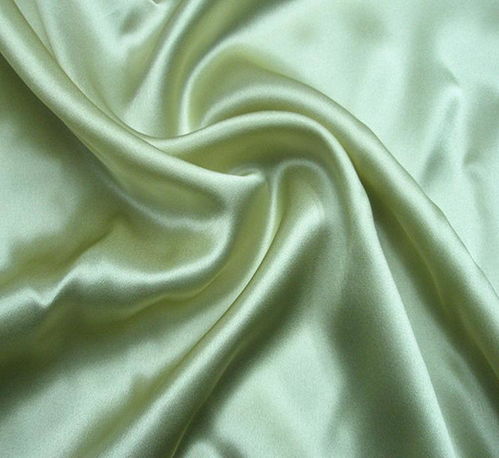An Insightful Survey into Home Textiles Market
This insightful survey explores the home textiles market, analyzing its trends and growth prospects. The report highlights the importance of sustainable materials in the industry, with a focus on eco-friendly fabrics and dyes. It also examines the influence of technology on the market, noting the rise of digital printing and 3D printing in textile design. Additionally, the survey discusses the role of fashion influencers in driving demand for trendy home textiles, and the impact of global events such as pandemics and economic crises on consumer behavior. Overall, the report provides valuable insights into the current state of the home textiles market and offers predictions for future growth.
Introduction: The home textiles industry is a multi-billion dollar sector, driven by the growing demand for comfortable and stylish living spaces. Textiles play an essential role in creating a warm and inviting atmosphere, enhancing the aesthetic appeal of homes, and providing comfort to their inhabitants. This report aims to provide a comprehensive analysis of the current state of the home textiles market, highlighting key trends, drivers, and challenges. It will also explore potential opportunities and suggest strategic recommendations for businesses operating in this field.

Market Overview: Home textiles encompass a wide range of products, including bedding, curtains, rugs, upholstery, and home decor items. The global home textiles market size is projected to reach $250 billion by 2025, with steady growth at a CAGR (Compound Annual Growth Rate) of approximately 4%. This growth is attributed to increased disposable income, changing lifestyle preferences, and the growing awareness of environmental sustainability among consumers.
Key Trends:
-
Sustainability: Environmentally conscious consumers are demanding more sustainable options in home textiles. Brands are adopting eco-friendly materials and processes, such as organic cotton, recycled polyester, and biodegradable dyes, to meet their demands.
-
Customization and Personalization: Customers are increasingly seeking unique and personalized home textiles that reflect their individual style and taste. Brands are responding by offering customizable designs, including monogramming, color matching, and custom patterns.
-
Technology integration: Innovative technologies, such as smart fabrics and digital printing, are transforming the home textiles industry. These technologies offer enhanced functionality, improved durability, and reduced energy consumption.
-
Online shopping: The rise of e-commerce platforms has made it easier for consumers to purchase home textiles online. Brands are investing in website optimization and customer service to enhance their online presence and address consumer concerns.
Drivers:
-
Economic Growth: A strong economy contributes to increased disposable income, which in turn drives the demand for home textiles.
-
Population Increase: An increasing population leads to higher demand for housing, which in turn increases the need for home textiles.
-
Changing Lifestyles: The rise of urbanization, lifestyle changes, and cultural shifts have led to a shift in consumer preferences, favoring comfort, relaxation, and aesthetics over traditional values.
Challenges:
-
Competition: With the rapid expansion of the home textiles market, there is intense competition between established brands and new entrants alike.
-
High Costs: The production of high-quality home textiles requires expensive raw materials and advanced technology, which can make them expensive for consumers.
-
Regulatory Challenges: The home textiles industry faces regulatory challenges related to product safety, quality standards, and environmental impact.
Potential Opportunities:
-
Innovation: Brands can leverage innovation to differentiate themselves from competitors and capture market share. For example, introducing eco-friendly and sustainable products can appeal to environmentally conscious consumers.
-
Targeted Marketing: By understanding consumer preferences and behavior, brands can develop targeted marketing strategies that resonate with specific demographics.
-
E-commerce Expansion: As online shopping becomes more prevalent, expanding into e-commerce channels can help brands reach a wider audience and increase sales.
Recommendations: To succeed in the home textiles market, businesses should focus on innovation, sustainability, and customer satisfaction. They should invest in research and development to create unique and personalized products that meet consumer needs. Additionally, they should adopt a customer-centric approach, leveraging data analytics to understand consumer preferences and tailor their offerings accordingly. Finally, businesses should embrace the digital revolution by optimizing their websites, improving customer service, and leveraging social media to build brand awareness and loyalty.
Conclusion: The home textiles market presents significant opportunities for businesses looking to expand their reach and improve their bottom line. By staying ahead of trends, addressing challenges, and embracing innovation, companies can successfully navigate the competitive landscape and thrive in this dynamic industry.
随着人们生活水平的提高,家装纺织品在家庭装修中的重要性日益凸显,本报告旨在通过对家装纺织品市场进行调研,了解当前市场趋势、消费者需求以及行业发展趋势,为家装纺织品企业提供参考,报告将采用表格形式,结合案例分析,力求全面、深入地呈现家装纺织品市场现状。
家装纺织品市场现状

家装纺织品市场是一个庞大的产业,涵盖了窗帘、地毯、床上用品、壁饰等多个领域,随着消费者对家装品质和舒适度的追求不断提高,家装纺织品市场呈现出多元化、个性化的发展趋势。
消费者需求
消费者对于家装纺织品的品质、环保、舒适度等方面有着较高的要求,他们更倾向于选择天然、环保、高品质的纺织品,同时也注重时尚、个性化、易搭配等特点。
行业发展趋势
随着科技的不断发展,家装纺织品行业正在向智能化、个性化、绿色化方向发展,智能家居、智能穿戴等新兴领域为家装纺织品行业带来了新的发展机遇,环保理念的不断深入也让更多消费者开始关注环保材料和绿色生产方式。
家装纺织品调研案例分析
某品牌窗帘系列的市场调研
该品牌窗帘系列在市场上具有较高的知名度和美誉度,通过对该品牌窗帘系列的调研,我们发现消费者对于窗帘的材质、颜色、款式等方面有着较高的要求,他们更倾向于选择天然、环保、高品质的窗帘材料,同时也注重时尚、个性化等特点,消费者对于窗帘的安装方式也提出了更高的要求,需要具备便捷、易安装等特点。
某家居用品公司床上用品系列的产品分析
该家居用品公司床上用品系列涵盖了床单、被套、枕头等多个品种,通过对该系列产品的调研,我们发现消费者对于床上用品的品质、舒适度、环保性等方面有着较高的要求,他们更倾向于选择天然、环保、高品质的床上用品,同时也注重时尚、个性化等特点,随着消费者对家居环保意识的不断提高,绿色材料和低碳生产方式也逐渐成为消费者关注的重点。
家装纺织品市场趋势分析
市场趋势展望
随着消费者对家装品质和舒适度的追求不断提高,家装纺织品市场将继续向多元化、个性化、绿色化方向发展,智能家居、智能穿戴等新兴领域将为家装纺织品行业带来更多的发展机遇,环保理念的不断深入也让更多消费者开始关注环保材料和绿色生产方式。
消费者需求变化趋势
随着科技的不断发展,消费者对于家装纺织品的品质和环保性等方面的要求将越来越高,消费者对于产品的个性化、易搭配等特点的需求也将越来越强烈,家装纺织品企业需要不断推出符合消费者需求的新产品和服务,以满足市场的需求。
家装纺织品行业建议
提升产品质量和环保性
家装纺织品企业需要不断提升产品质量和环保性,采用环保材料和生产方式,确保产品的品质和环保性符合消费者的需求,企业还需要加强产品的研发和创新,推出更多符合市场需求的新产品和服务。
加强品牌建设和营销推广
家装纺织品企业需要加强品牌建设和营销推广,提高品牌的知名度和美誉度,通过加强品牌建设,提高产品的品质和服务水平,吸引更多的消费者关注和支持,企业还需要利用社交媒体等新兴渠道进行营销推广,扩大品牌的影响力和市场份额。
家装纺织品市场是一个庞大的产业,具有广阔的发展前景,随着科技的不断发展和消费者需求的不断变化,家装纺织品行业将继续向多元化、个性化、绿色化方向发展,企业需要加强产品质量和环保性,加强品牌建设和营销推广,以满足市场的需求。
Articles related to the knowledge points of this article:
Exploring the Timeless Tapestry of Chinese Textiles:A Millenniums Journey



